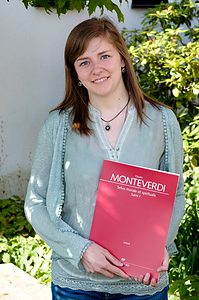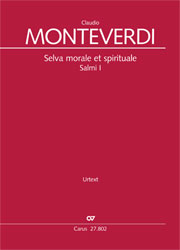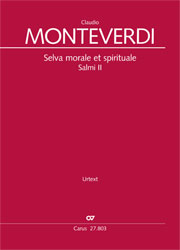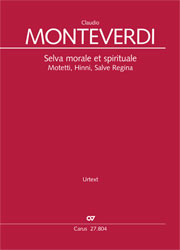Expressiveness Through Simplest Means
Cornelia Fahrion’s first encounters with Monteverdi were in a vocal ensemble singing his secular madrigals, but she very quickly became familiar with his church music output as well. And even if she cannot say that she has one “favorite piece”, she can name a complete collection of musical pieces which moves her deeply.
For as long as I can remember I have loved the music of the 16th to 18th centuries above all other. When I decided to study singing, there was no question that I would specialize in early music here too. In this context I got to know so much beautiful music that it is difficult for me to choose. And when I ask myself, “What is my favorite piece?”, then – presumably like most people – I cannot name just one. But it was clear to me straight away that it would be a work from the early music repertoire.
My first encounters with Monteverdi were in a vocal ensemble singing his secular madrigals, but I very quickly became familiar with his church music output as well. And even if I cannot say that I have one “favorite piece”, I can name a complete collection of musical pieces which moves me deeply. And that is despite the fact that it was published almost 400 years ago: Claudio Monteverdi’s Selva morale e spirituale of 1641. This music has lost nothing of its expressiveness even after this period of time and gives me goose pimples, no matter how often I have already heard or sung it myself. And what is more, the reason for the expressiveness of this music does not lie in any harmonic complexity or showiness. Using the simplest means it achieves its aim and hits its target – for me at least.
The collection of Selva contains what its title promises. Since the 16th century the word Selva , Italian for forest, has been used to denote encyclopaedic collections with an all-embracing or anthology-like character. And that sums up Monteverdi’s Selva morale e spirituale exactly: it is an exemplary collection drawn from 30 years of sacred music output. Hence its variety moves us: compiled by Monteverdi himself, it gives an overview of those works which he himself regarded as a representative selection from his time as maestro di cappella at San Marco in Venice. And these naturally include works of the most varied genres and scorings. What was published is a collection of 37 works which are as varied in every respect as anyone could wish for – there is something for everybody!
Even though the Selva morale is often in the shadow of the now much better known Vespers of the Blessed Virgin , it has many advantages in comparison: it contains everything from solo songs with basso continuo accompaniment (as in the motets) through small pieces for chamber music scorings with equally important vocal and instrumental parts (like the beautiful Iste Confessor ) to works with soloists, large-scale chorus and concertante instruments (such as in the Salmi ). A wide variety of liturgical occasions is also covered. And it is precisely the larger-scale works, such as the psalm settings with their mainly homophonic tutti sections, which are excellently suited to choirs who want to sing Monteverdi’s music, but do not feel able to tackle the more challenging Vespers.
This year, the 450th anniversary of Monteverdi’s birth, seems to be the right occasion to perform his wonderful compositions – perhaps including one or two favorite pieces from the Selva.
Cornelia Fahrion studied musicology and singing, specializing in early music, and has been a student trainee in the editorial department and CD label since November 2016.







Leave a Reply
Want to join the discussion?Feel free to contribute!